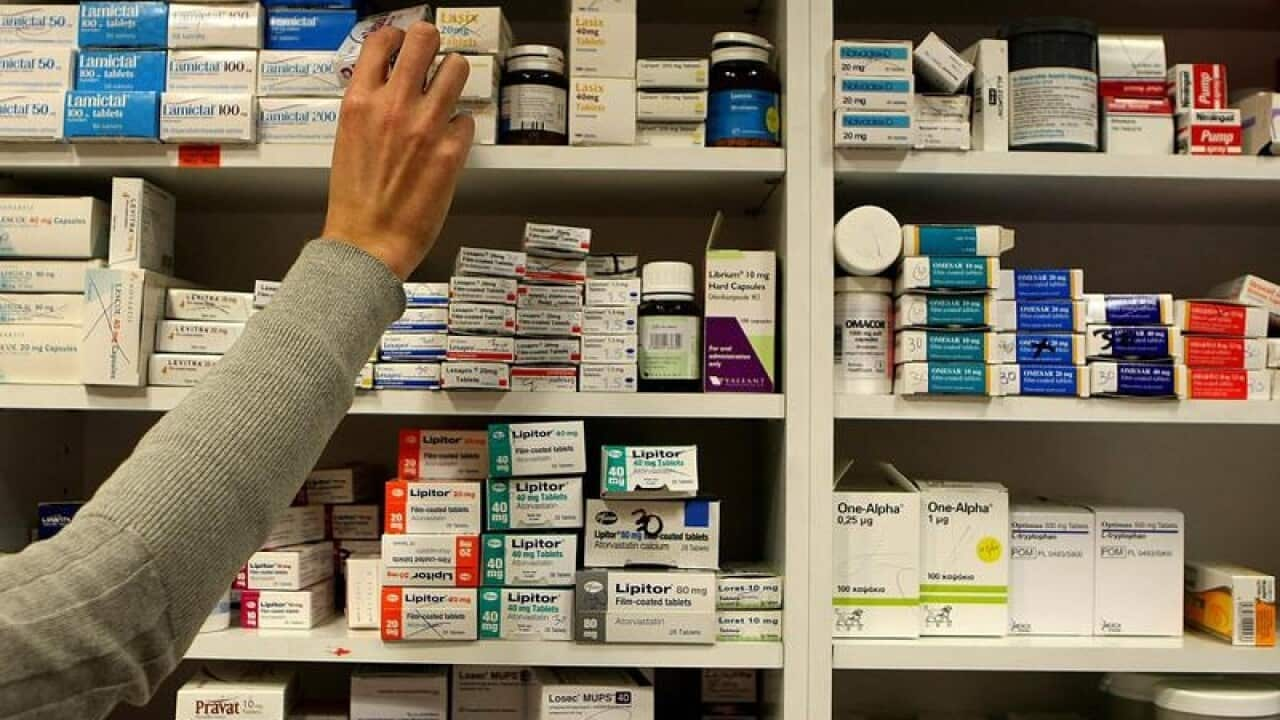Environmental experts have expressed concerns over the potential consequences of antibiotics in rivers after a of pharmaceuticals in the environment.
The study, presented in Finland this week, found out antibiotic residues in rivers worldwide exceed environmental safety thresholds by up to 300 times.
While the worst affected areas were in Bangladesh, Kenya, Ghana, Pakistan, Nigeria and parts of Europe, Professor Stuart Khan from the school for civil and environmental engineering at UNSW, said the situation in Australia is also concerning.
“In Australia, we have the same pharmaceuticals [as elsewhere]; we have the same sewerage treatment processes, so the sewage that we discharge will certainly contain a lot of antibiotic substances,” he told SBS News on Tuesday. Previous research Professor Khan was involved in found concerning levels of antibiotics in Australian rivers, he said, but the "one big difference in Australia, compared to much of Europe and USA and parts of Asia, is that most of our big cities are right by the coast and our treatment plants tend to discharge straight into the ocean.”
Previous research Professor Khan was involved in found concerning levels of antibiotics in Australian rivers, he said, but the "one big difference in Australia, compared to much of Europe and USA and parts of Asia, is that most of our big cities are right by the coast and our treatment plants tend to discharge straight into the ocean.”

Antibiotics have been found in rivers worldwide. Source: EPA
There are a few examples of large sewerage plants that discharge their sewerage into inland waterways, he said, but “it’s nothing like you see in other parts of the world”.
“Results show that concentrations [of antibiotics] are much lower."
Professor Khan said antibiotic resistance is nevertheless a major issue that needs to be managed carefully.
“The water industry has a very clear role to play,” he said.
“So if the water industry is discharging antibiotics via sewerage effluents into the rivers and the environment, then we need to look very closely at our treatment plants and how effective they are and potentially working harder to try to remove trace concentrations of these chemicals that may cause serious environmental implications.” Researchers looked for 14 commonly used antibiotics in rivers in 72 countries across six continents and found antibiotics at 65 per cent of the sites monitored.
Researchers looked for 14 commonly used antibiotics in rivers in 72 countries across six continents and found antibiotics at 65 per cent of the sites monitored.

Antibiotics find their way into rivers and soil via waste and leaks from wastewater treatment plants. Source: Getty Images
This, the scientists said, impacted wildlife and also likely contributed to the problem of antimicrobial resistance.
It showed high-risk sites were typically close to wastewater treatment systems, or waste or sewage dumps.
“The results are quite eye-opening and worrying, demonstrating the widespread contamination of river systems around the world with antibiotic compounds,” Professor Alistair Boxall from the York Environmental Sustainability Institute said in a statement.
“Many scientists and policymakers now recognise the role of the natural environment in the antimicrobial resistance problem. Our data show that antibiotic contamination of rivers could be an important contributor.”\
The UN said last month the increase in antibiotic-resistant bacteria is a global health threat that could kill 10 million people by 2050. The director of the Queensland Statewide Antimicrobial Stewardship Program Dr Trent Yarwood explained how the antibiotics get into rivers and soil.
The director of the Queensland Statewide Antimicrobial Stewardship Program Dr Trent Yarwood explained how the antibiotics get into rivers and soil.

The Parramatta River in Sydney. Source: AAP
“We know that whenever people take antibiotics, they have their effect in the body, but quite a large amount of antibiotics gets passed out of the body unchanged in waste, whether that be in urine or in faeces when people go to the toilet," he told SBS News.
"So we do end up with quite a lot of antibiotic residue, including in their active forms, that make their way through the sewerage process into the environment and water." Discovered in the 1920s, antibiotics have saved tens of millions of lives from pneumonia, tuberculosis, meningitis and a host of deadly bacteria.
Discovered in the 1920s, antibiotics have saved tens of millions of lives from pneumonia, tuberculosis, meningitis and a host of deadly bacteria.

The UN says antibiotics are becoming ineffective in treating deadly infections. Source: Getty
Overuse and misuse of the drugs are thought to be the main causes of antimicrobial resistance.
Dr Yarwood said in Australia, antibiotics are prescribed too often and with the flu season starting, people should try to limit their use of the drug as much as possible.
"We know that people who presented to their GPs with flu, half of them were on antibiotics, even though we all know that flu is a virus and there's no role for antibiotics."
The Australian Government website advises "antibiotics should not be used to treat colds or the flu, which are viral — not bacterial — infections".
Mild flu gets better on its own without any treatment.
"You can relieve the symptoms by: resting, drinking fluids, particularly water, taking paracetamol to reduce pain and fever, using decongestant medicines.
"People with a serious case of the flu may need to go to hospital."


